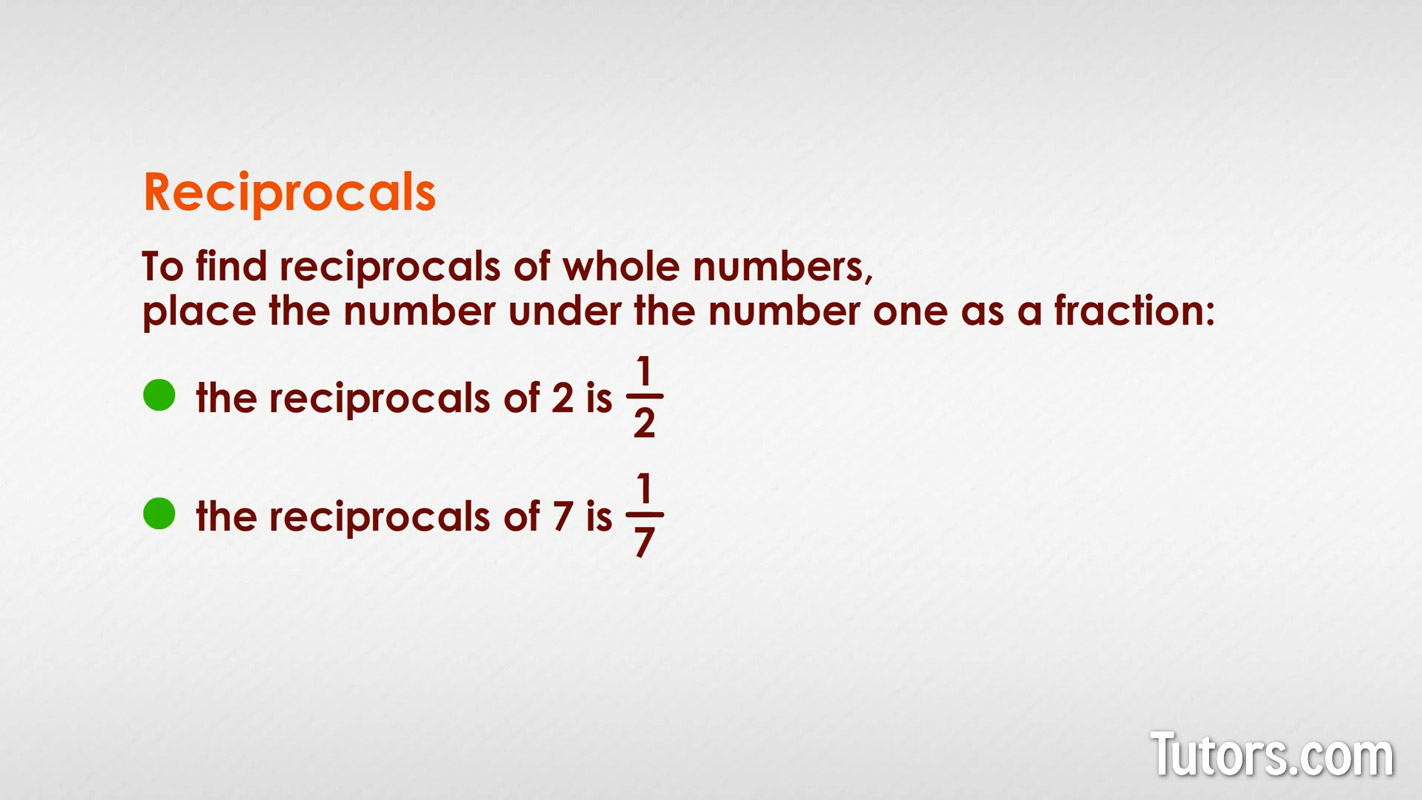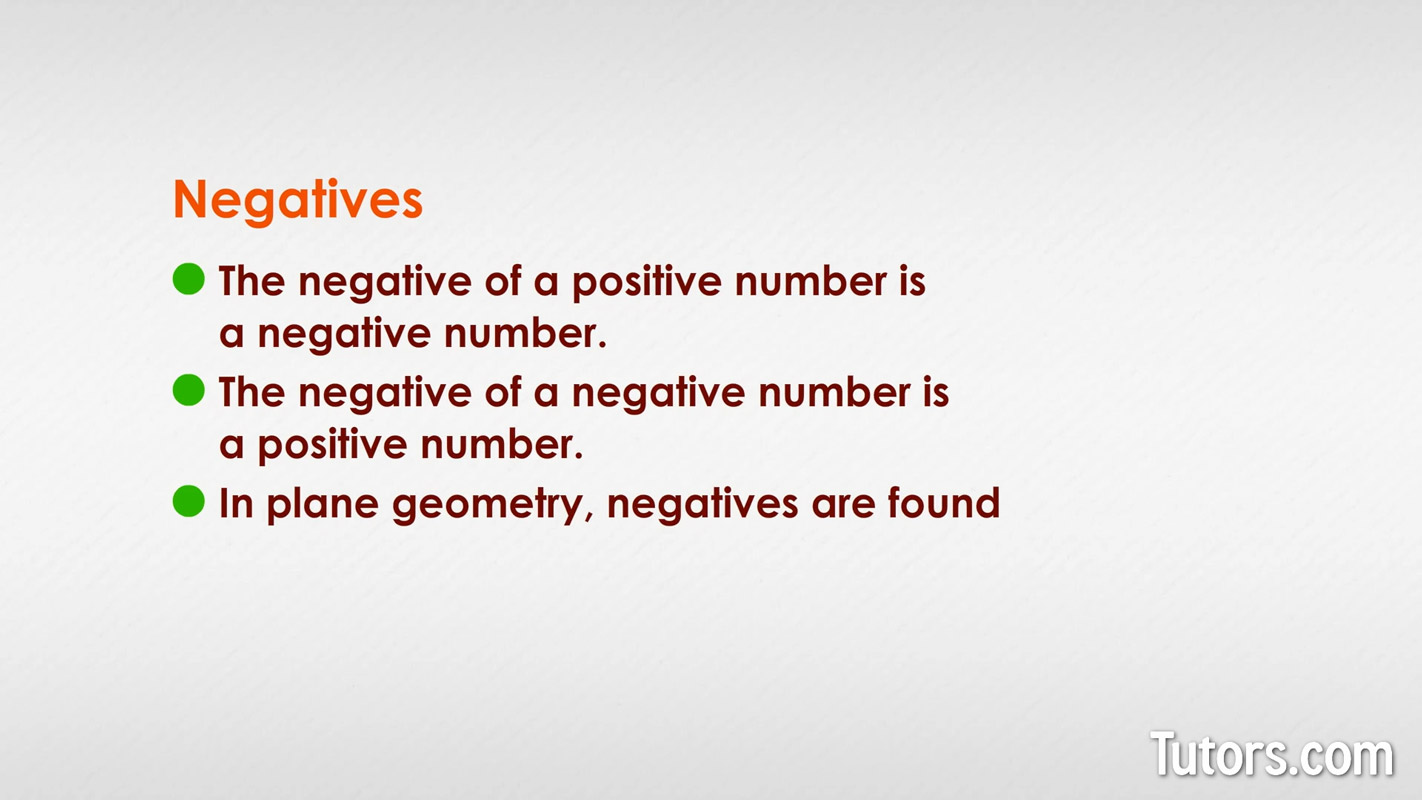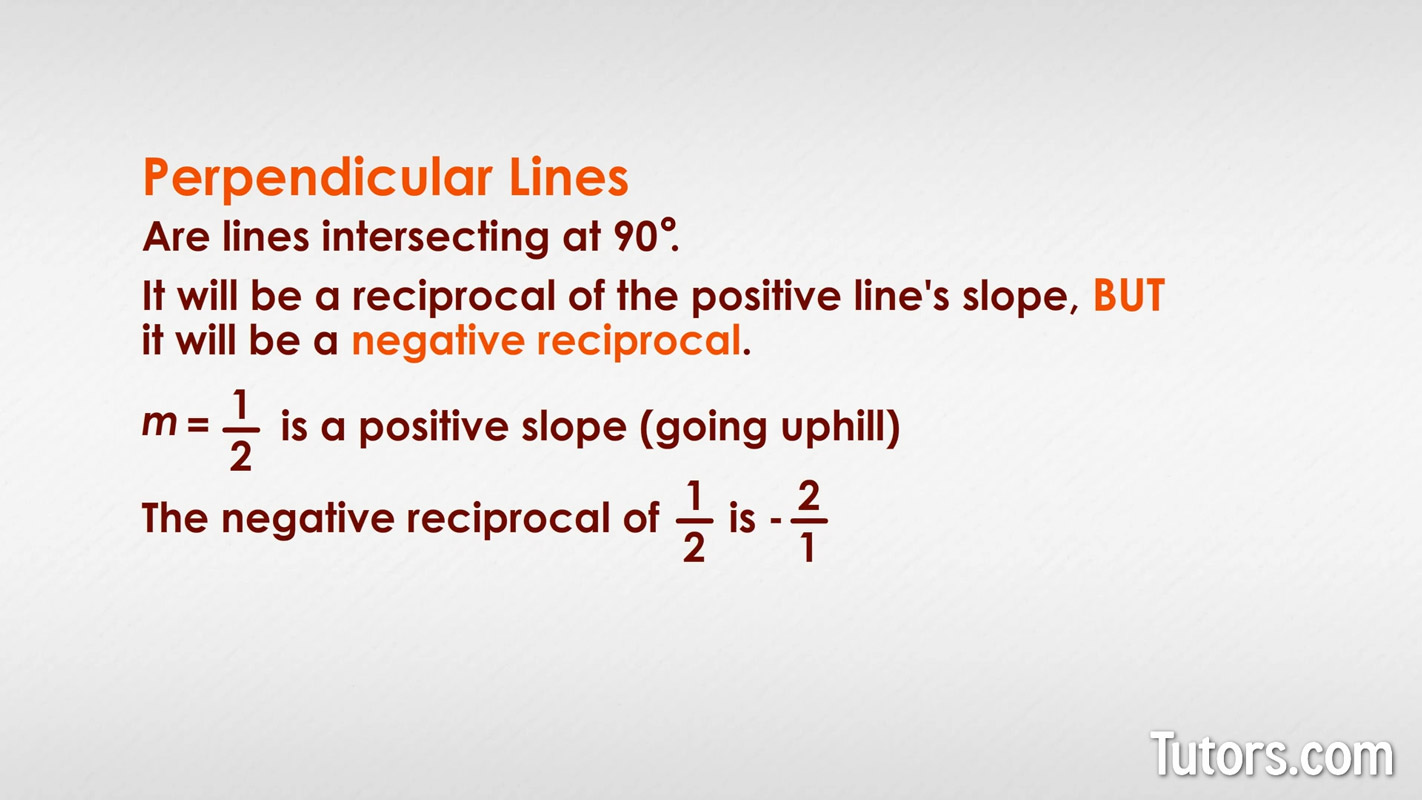Slope of perpendicular lines
Perpendicular slope
A perpendicular slope is the negative reciprocal of any other slope. In geometry, all lines have slopes. The slope of a line is its angle, or steepness, compared to the x-axis value. Mathematically, slope is the change in y-value compared to its change in x-value.
Perpendicular lines definition
All pairs of lines in geometry must do one of two things: intersect or not intersect. When two lines intersect, they must do one of two things: intersect at right angles or intersect at other angles.
When two lines intersect at right angles, they are perpendicular lines, and we can measure their slope. A vertical line is perpendicular to a horizontal line.
Reciprocals
Reciprocals are two values such that multiplying them gives a product of 1, like and :
Practice by finding reciprocals of these numbers:
Did you say , , and ?
You may notice all you are doing with fractions is having the numerator and denominator switch places. You can also find reciprocals of whole numbers and decimals.
To find reciprocals of whole numbers, place the number under 1 as a fraction:
The reciprocal of 2 is
The reciprocal of 7 is

To find reciprocals of decimals, you can convert the decimal to a fraction and then find its reciprocal, or you can place the decimal under 1 as a fraction and use a calculator:
The reciprocal of is
The reciprocal of 1.6:
Negatives
The negative of a positive number is a negative number. The negative of a negative number is a positive number.

For practice, find the negative values of:
2
-5
-0.625
We hope you said -2, 5, , 0.625, and .
In plane geometry, negatives are found in slopes that go "downhill."
How to find perpendicular slope
Perpendicular lines are lines intersecting at 90°. The two lines may not be oriented on a coordinate grid so that one of them lines up with (or is parallel to) either the x-axis or y-axis. They possibly could, but they may not.
Here is the difficult part of finding the slope of the line perpendicular to the positively sloping line:
It will be a reciprocal of the positive line's slope, BUT
It will be a negative reciprocal

Whoa! We have to get the opposite slope, so the line "stands up" more than it "lies down," but we also have to make it negative, so it goes downhill if the first line went uphill.
A line where is a positive slope (going uphill). Lines perpendicular to that will have reciprocal slopes. So it will first be (the reciprocal), but it must also be (the negative or opposite reciprocal), to slope downward at a right angle to our first line.
If you do not know the slope, m, of the positive sloping line, then you will need to calculate it using the slope formula:
Negative reciprocals
Slopes of perpendicular lines will always be negative reciprocals. Without worrying about seeing the lines themselves, find the negative reciprocals of these slopes:
2
-5
-0.625
You do two things to find the negative reciprocal of the slope, and the order does not matter:
Reverse the signs
Find the reciprocals
So, in order, we have these negative reciprocals:
-2
6
Find perpendicular slope example
We are going to give you the two points plotted on a positive sloping line, and the slope-intercept form:
(2,3.5)
(-5,-1.75)
With that information, can you calculate the slope of any line perpendicular to it?
You can find the slope of a line perpendicular to this line by using the points and going through , or you can just nab it right out of the slope-intercept form! Yes, the slope of this line is . The 2 is the y-intercept.
So, what is the negative reciprocal of ?
The slope of a perpendicular line is , because that is the negative reciprocal of the slope of the given line.